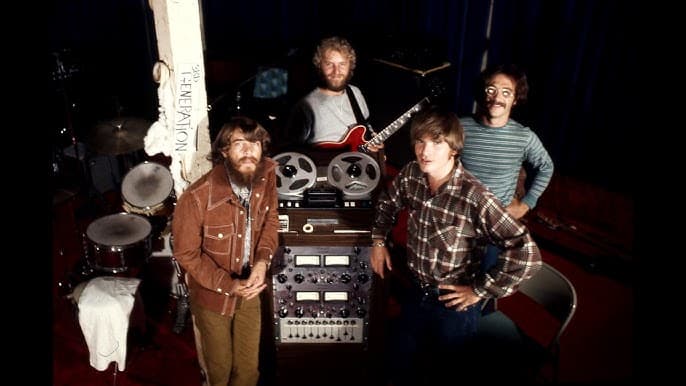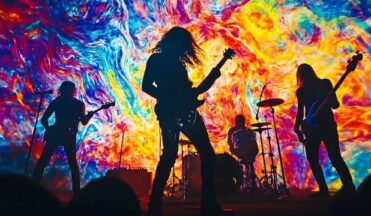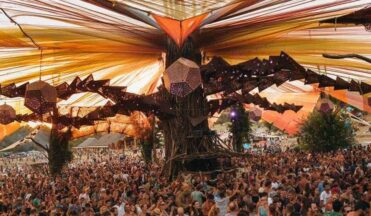Psychedelic rock is not just a music style with characteristic guitar reverberations and sound experiments. It is a form of perception, an art that appeals to the inner world of a person, their subconscious, emotions, and even physical reactions. It was born at the crossroads of cultural revolutions, perception experiments, and a longing for freedom in the broadest sense. That is why this music doesn’t live in recordings — it comes alive on stage, among lights, smoke, crowds, and freedom.
Today, despite the digital revolution, streaming services, and home studios, psychedelic rock remains a living art form that requires live contact. It literally loses its meaning without a stage, people, and amplifying perception factors: lights, vibrations, visual projections. In Hungary, with its rich musical history and love for live performances, this is especially noticeable. Festivals like Kolorádó or Fishing on Orfű have become places where interest in psychedelic rock is revived, where the sound becomes part of a ritual.
Why Psychedelic Rock Is Impossible Without a Stage
A studio album can convey the structure of a composition, but not its atmosphere. In psychedelic rock, accuracy of performance is less important than energy — the exchange of vibrations between the musician and the listener. It is at festivals that conditions are created in which music becomes multidimensional: it can not only be heard, but also felt through the skin, body, and eyes.
On stage, every effect — from analog synthesizers to vintage phasers — works differently than in headphones. Even the hum of amplifiers, sound bouncing off hills or walls, the roar of the crowd — all of it weaves into the musical fabric and makes it truly psychedelic. In this sense, psychedelic rock is a live experience, akin to theater or performance art, not a product for background listening.
Visual support plays a special role: projections, lighting effects, lasers, smoke, sometimes even choreography and costumes. All of this enhances the “expanded consciousness” effect that defines the psychedelic scene. That’s why performances by bands like King Gizzard & The Lizard Wizard, Kikagaku Moyo, or local acts like Dope Calypso become almost mystical experiences.
Hungarian Festivals as a Medium for the Psychedelic Experience
Festivals in Hungary have long gone beyond being just musical events. They have become multisensory platforms where the audience is immersed in a total experience — from scenography to culinary experiments and modern art installations. These events give psychedelic rock the environment it needs to fully bloom.
Kolorádó Festival, held in the picturesque forests at the foot of the Buda Hills, offers not just stages but entire audiovisual worlds. Music here is just part of the overall narrative. When a band takes the stage with abstract fractal projections glowing behind them, the audience isn’t just listening — they become part of something larger.
At such festivals, the boundary between artist and audience disappears. Dancing, interaction with space, even the natural environment become part of the musical experience. And in these conditions, psychedelic rock reveals itself most fully, turning into a ritual that liberates from the everyday and the routine.
Body and Sound: The Physiology of Live Perception
Many researchers note that physical presence at a concert affects the perception of music. Air vibrations, low-frequency tremors, crowd synchronicity — all of this triggers complex neurophysiological processes. In the case of psychedelic rock, this is especially important: its goal is to shake up the inner world, to alter the perception of time, space, and emotions.
That’s why live sound cannot be replaced by high-quality recordings. Even the best digital simulation can’t replicate the feeling of vibration under your ribcage when a heavy bass plays on stage, or the disorientation that occurs when sound seems to come from all directions. Psychedelia requires full bodily participation, and only in concert does it take shape.
Conclusion: Music as a Portal
Psychedelic rock is not a genre that can be easily defined by tempo or sound. It’s a cultural and emotional code that can only be accessed through live contact, shared experience, and energetic connection between artist and audience. That’s why a festival is not just a venue for performance — it’s a portal that opens the way to a different perception of reality.
Hungary, with its rich musical traditions, attention to sound quality, and growing open-air culture, becomes an ideal ground for the revival of the psychedelic scene. Here, under the open sky, in the rhythm of bass and the play of lights, music regains its power to be more than sound — to be an experience, a journey, and art in the fullest sense of the word.


